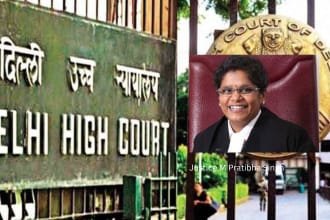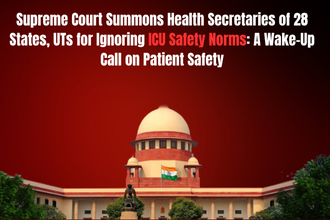In a landmark ruling, the Delhi High Court has clarified a significant aspect of copyright law concerning classical music traditions. Justice Prathiba M Singh, in an interim order dated April 25, 2025, held that while ragas and taals from the Hindustani classical tradition remain in the public domain, original compositions based on these frameworks can be protected under the Copyright Act, 1957.
The decision came in a copyright infringement suit filed by renowned Dhrupad singer Ustad Faiyaz Wasifuddin Dagar against celebrated composer A R Rahman. Dagar alleged that Rahman’s song “Veera Raja Veera” from Ponniyin Selvan 2 was copied from “Shiva Stuti”, a Dhrupad composition by the Junior Dagar Brothers.
This ruling sets a significant precedent in the intersection of classical music, copyright protection, and artistic innovation.
Background of the Case
Ustad Faiyaz Wasifuddin Dagar, a custodian of the Dagarvani tradition of Dhrupad music, alleged that Rahman’s song was not merely inspired but substantially identical to “Shiva Stuti”. Rahman and the producers denied the claim, arguing that Shiva Stuti was itself based on Raga Adana, a classical framework in the public domain. They contended that no exclusive rights could subsist over classical works structured around such ragas.
The Court had to navigate the delicate tension between preserving traditional public domain knowledge and protecting individual creative expressions within those traditional frameworks.
Court’s Observations: Public Domain vs Originality
Justice Prathiba M Singh made a crucial distinction:
- Ragas and taals are public domain elements, freely available for all to use.
- Original compositions using these frameworks creatively and distinctively qualify for copyright protection under Section 13 of the Copyright Act, 1957.
The Court emphasized that a composition based on a raga involves numerous creative choices by the composer. Though the raga provides a structure, the specific arrangement, selection, and expression of notes make the composition original.
Justice Singh drew a powerful analogy:
“All classical music compositions are based on the eight swaras – Sa, Re, Ga, Ma, Pa, Dha, Ni, Sa. Similarly, all English literary works are based upon the same alphabet A-Z. Yet, no two novels are the same.”
Thus, ownership cannot be claimed over ragas themselves, but creative expressions within those frameworks can attract copyright protection.
Lay Listener Test vs Technical Analysis
One of the most significant aspects of the judgment was Justice Singh’s preference for the “lay listener test” over a purely technical musicological analysis.
In Indian classical music, the Court said, the aural impact — how the music sounds and feels to an average listener — is more important than the technical dissection of musical notations.
The Court found that to a lay listener, Veera Raja Veera was identical in Swaras (notes), Bhava (emotion), and overall aural impact to Shiva Stuti.
Thus, Rahman’s defense — that any similarities were due to the common raga structure — was rejected as “completely untenable and baseless.”
Deliberate Access and Conscious Copying
Another important finding was that Rahman had deliberate access to the original Shiva Stuti composition:
- Two singers of Veera Raja Veera were disciples of Ustad Faiyaz Wasifuddin Dagar.
- Rahman had specifically sought compositions from the Dagarvani tradition while creating music for Ponniyin Selvan 2.
Thus, the Court inferred that the similarity was not coincidental but a conscious and deliberate selection of the Shiva Stuti composition.
Directions Issued by the Court
To balance recognition of original composers with commercial realities, the Delhi High Court crafted a nuanced set of interim remedies:
- *Credit Correction: All OTT and online platforms must amend the credit slide accompanying *Veera Raja Veera. Instead of stating “Composition based on a Dagarvani Tradition Dhrupad,” it must now state:
“Composition based on Shiva Stuti by Late Ustad N Faiyazuddin Dagar and Late Ustad Zahiruddin Dagar.”
- *Monetary Deposit: Defendants (Rahman and the producers) must deposit ₹2 crores in a fixed deposit pending the trial’s final outcome.
- *Costs Awarded: An additional sum of ₹2 lakhs was ordered to be paid to Ustad Dagar within four weeks towards litigation costs.
Significance of the Ruling
This ruling has profound implications for:
- Classical Musicians: It affirms that their creative contributions based on traditional structures are legally protected.
- Copyright Law in India: It deepens the understanding that traditional frameworks and creative expressions within them are distinct.
- The Film and Music Industry: Producers and composers must exercise greater caution while using traditional works, ensuring that they do not infringe upon protected compositions.
Conclusion
The Delhi High Court’s decision in Ustad Faiyaz Wasifuddin Dagar vs AR Rahman represents a landmark moment for Indian copyright jurisprudence. It strikes a careful balance between preserving the richness of the classical music tradition and protecting the originality and labor of contemporary musicians.
By emphasizing creativity within tradition, the Court has opened new pathways for safeguarding India’s invaluable musical heritage while encouraging innovation and respect for original contributions.
As the trial progresses, the final verdict will be closely watched not only by the Indian music and film industries but also by legal experts and classical musicians worldwide.



